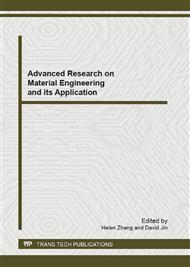p.373
p.377
p.381
p.385
p.389
p.393
p.399
p.403
p.407
Numerical Simulation of TLP Bonding Process of 20 Steel Tubes
Abstract:
Finite element numerical dynamic simulation of the TLP bonding process of 20 steel tubes was conducted using ANSYS, finite element analysis software. The results show that there is a sharp decline in the performance of the joint and the neighboring parent material during the initial cooling stage in the transitional phase diffusion bonding process. When the isothermal solidification temperature is increased, the welding deformation becomes more apparent, and the residual stress on both sides of the joint is reduced. Thus, the weak area of TLP bonding can be found near the middle. A reasonable choice of interlayers can relieve stress concentration and increase the TLP bonding joint performance.
Info:
Periodical:
Pages:
389-392
Citation:
Online since:
February 2012
Authors:
Keywords:
Price:
Сopyright:
© 2012 Trans Tech Publications Ltd. All Rights Reserved
Share:
Citation:


